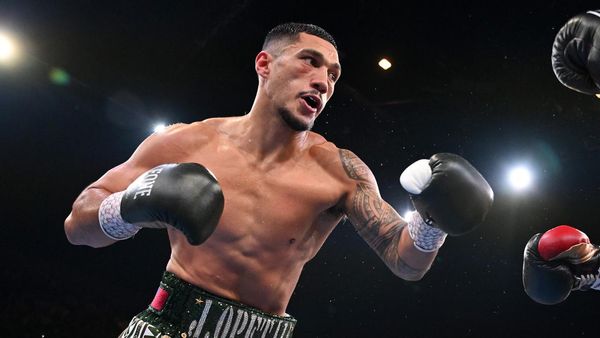
Behind a eucalypt curtain in the south-eastern forest on the Victorian-New South Wales border, the son of an old colonial family is reflecting on the privilege of his inheritance.
Jim Osborne’s ancestor Henry Osborne (1803-1859) made a fortune from southern NSW pastoral stations and Illawarra coal mines. Though he built a business as a landscape architect working for wealthy clients in New York and Australia, he still has income from that colonial inheritance.
“There was a recognition that all the privilege I have in my life stemmed from my great, great, great grandfather being a really good coloniser,” he says.

Osborne’s 1,500-hectare property, Yambulla, has been in the Osborne family for 73 years. It is on Yuin country, cradled in a valley surrounded by hills and ringed by forestry operations.
On the drive in, unseasonal snow was falling. It is the year Australia will vote on the Indigenous voice to parliament in an attempt to recognise First Nations. A storm of controversy raged over Stan Grant suggesting on the day of coronation that the British Crown had a bit to answer for when it came to the impacts of colonisation.
Land is at the heart of that conflict and this story. Osborne is trying to find a new model for “co-custodianship” for his old grazing property. That requires a merging of peoples and of new and ancient land practices.

Before the Black Summer bushfires, Osborne and his husband, George, built a sustainable house and spent their time spraying blackberries. Osborne had not much more in mind than the removal of weeds. Little by little, he began to see the native landscape emerge.
It was those 2019–20 fires that sparked a complete reset. When the pair returned to the smoking paddocks, Osborne was at a loss. A fellow landscape architect suggested he reach out to the Yuin people for advice on how to restore the land. It led to an experiment to share his good fortune.
The terms of the agreements are still being negotiated but they essentially grant access to a part of Yambulla to Back to Country, an organisation that helps people connect with the land, to use at will. He hopes other non-Indigenous farmers can eventually use the place as a case study.
He began the experiment with trepidation, his father Pat’s advice ringing in his ears: let someone in the front gate and you will lose control. He felt a sense of loneliness as he contradicted that warning, followed by deep-seated unease once he invited people in.
“It just automatically brought up fears,” Osborne says.
“One of the things about owning land is you have agency. I had lost all this agency. I think that it’s all got so much to do with this trans-generational fear from landowners. It comes right back from them taking land they knew wasn’t theirs.”

Richard Swain, a Wiradjuri man working with Back to Country, says that while a number of landholders had reached out to Indigenous community groups, Osborne was the first he had heard of who had allowed them to do it on their own terms with open access.
“The Yambulla block he has given access to is really quite intact,” Swain says. “And that’s quite special. It gives us a base to work from.
“This is about putting country first. Those who want to come together for the healing of the country are welcome. It’s not about Aboriginal people and non-Aboriginal people.”
Osborne no longer grazes cattle. Most of the blackberries have been removed and made into the house jam. Kangaroos and emus have moved in. There is a regenerative forest plantation.
As a result, the waterways are shallow, broad and spongey underfoot. Wet tussock meadows bring to mind the landscape design of the new perennial movement, though none of it is deliberately planted. It has simply emerged from under the oppressive blackberry.
The water that flows over Yambulla trickles into the Genoa River and down to Gypsy Point, past a place called Yumburra. That land belongs to the Indigenous social enterprise Black Duck Foods, founded by Bruce Pascoe.
Osborne reached out to Pascoe because he saw the writer had a dog called Yambulla, and offered him a declaration of sorts that included respect for Indigenous knowledge, expertise and collaboration. Black Duck employs a team of seven from the local Indigenous community to revive the knowledge to produce native flour and other foods.

Black Duck has been harvesting Yambulla’s grasslands, including wattle seed (acacia melanoxylon), spear grass grain (austrostipa bigeniculata) and kangaroo grass grain (themeda australis).
Pascoe says there is a small group of non-Indigenous farmers who might be interested in partnerships with local Aboriginal communities, though some groups will be more ready to partner than others.
“Aboriginal people are besieged by goodwill,” he says. “And sometimes it’s very hard to separate goodwill from self-interest.”
Pascoe says the Yambulla connection provides not only the chance to harvest native grains but a chance for young people to connect with country. It also provides the opportunity of greater understanding of environmentalism in practice.

Pascoe believes there is a big story to be developed in the concept of Indigenous and non-Indigenous people sharing country.
“You could only guess what might happen, really, as the partnership develops,” he says.
“A few weeks ago, we had 40 Aboriginal men on the property, working out how how we would set up a camp base there. We had a meal with Jim during that time where we got a kangaroo on the property and served up a kangaroo stew.
“The mob don’t know how we’re going to use it yet. But we know that we want to use it to try and save young people – boys and girls – from the court system.”
Osborne’s ultimate aim is to make the business sustainable. Paying guests can stay at Yambulla and the price includes a donation to the work. The regenerative forest plantation will eventually generate income. But he estimates he has spent $1m in the process of working out the concept.

“One day I was driving over the hill and there were Bruce’s guys harvesting and I thought: this is the first time there’s something actually happening on this property that I didn’t have to pay for,” he says. “And they were doing something really useful.”
Instead of spending his days spraying blackberries and trying to keep up with the fencing, Osborne is able to share the property and intends to make it profitable.
“There are people all over the place, like myself, who own land who want to do the right thing,” he says. “And if you can increase the percentage of people who manage land in this way by just 5%, you’ve made a difference.”
This story was updated on 13 May 2023 to remove the reference to Gippsland in the headline.







